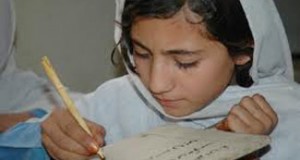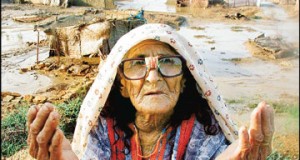By: Syed Akhtar Ali
Bad news has been coming recently of Pakistan losing the case in International tribunal on the Reko Diq case. The penalty expected varies from 300-400 million USD to many billions of USD, depending on the approach to loss compensation adopted. In this very space, I had in 2011 counselled and opposed the kind of judicial activism that was in evidence on the issue both by the plaintiff and the judiciary – one was trying to be more enthusiastic than the other. In this piece, I would like to throw some new light on the issue, taking stock of the issue and would attempt to come out with some policy proposals and recommendations.
Let us first have some perspective on Reko Diq copper resource and Tethyan company mining proposal which attracted controversy and heated arguments more on opposing it and very few supporting it. Copper is traded in broadly three forms: a) concentrate containing 25-30% copper; b) Blister or refined copper containing 95-98% copper; and c) A Grade Electrolytic Copper containing 99.98 % copper cathode. Two kind of products are made in the downstream industry: sheets, plates and tubes for non-electrical uses in building and construction and engineering industry requiring only refined copper and Wire Rods and Wire and cables for electricity sector.
Tethyan had acquired an exploration licence for Reko Diq ore which hitherto was a vaguely defined resource. As per claims of the company, it spent 200-300 million USD and several years to firm up the resource and prepared a feasibility study for mining it, identifying an economic resource of 2 billion tons of copper ore resource of 0.6% concentration, which means a net quantity of 12 million tons. There is an associated gold amount of 650 metric tons as well. Tethyan proposal was to produce and export copper concentrate (containing 25-30% copper) in an annual volume of 1,000,000 tons containing copper to the tune of 250,000 tons and gold to the tune of 12 tons per annum. Putting all this in monetary terms is rather difficult as copper prices have fluctuated in the past from 3000 to 8000 USD per ton at London Metal Exchange (LME). However, it must be noted that the LME price of 3-8000 USD per ton is of ‘A grade’ copper and not the concentrate that was proposed to be produced and exported. The price of the concentrate hovers around 50% of that of ‘A grade’ copper that is quoted at the LME.
In the popular circles various values of the Reko Diq copper resource have been quoted going upto 500 billion USD or even more. However, if one multiplies, 12 million tons of copper with an average price of 5000 USD per ton (LME for A Grade Electrolytic 99.98% Copper Cathode), the product comes out to be 60 billion USD. One may have to spend 85-90 % of this amount in bringing out the ore from ground and processing it to a sellable stage. Thus the net value of resource that remains is 6-10 billion USD only that has to be shared among the resource owner and investors over a period of 60 years and discounted at the rate of 10% p.a., it may hardly be a few billion USD.
There are usually three sources of income to resource owner: a) royalty of 2% (varying between 1 and 3% usually; b) share in profit as per equity share, in this case proposed at 25%;c)Government taxation, local, provincial and federal totalling to 35-40% of gross profit. These are the kind of standard or typical terms which a mining company would offer even in the US, Canada, Europe or elsewhere in the developed world. Tethyan estimated a Capex investment of 2.3 billion USD. For a 25% share in equity, the government of Balochistan would have to invest 125 million USD as equity share. Based on these figures, Balochistan Government would have earned a royalty and profit of 50 million USD out of which half would have been the royalty. Government of Pakistan would have earned an estimated 35 million USD per annum in the form of corporate taxation, which could have been shared with GoB as well as a special arrangement. This totals to 85 may be 100 million USD per annum and grosses to 5 billion USD over the entire life of the project. If compared with popular valuation of 500 billion USD, it is very little, but in realistic terms, it is not very low with a net resource valuation of 60 billion USD.
We tend to have abnormal assessment and valuation of mineral resources. Mineral resources are abundant in the world; for example, copper is being mined in some 35 countries and there are copper resources of much better quality in the market having ore percentage of 2% or more as compared to 0.6 % of ours. Demand-and-supply situation fluctuates cyclically resulting in prices going up and down by a factor of 3 to 4. In development literature, mineral resource has been cited as curse, as it generates many problems of inner political dissension or foreign occupation and colonization. It also chills other parts of the economy through easy income and exports. In most parts of the world, where minerals are there or are expected, there was colonization and currently there are political conflicts. In Pakistan, it is this unrealistic valuation of mineral riches that incites some Baloch leaders on secession. And in India, in most parts where there are minerals, there is unrest or are secessionist movements. Same is the case in most of Africa.
Coming back to the Tethyan feasibility proposal for the award of mining license as per procedure, Balochistan government and later the Supreme Court shot down the proposal and termed the Tethyan licence null and void. Basically, there were two sources of contention; a)it was perceived that the income proposed was too less, which we have seen above, was not the case; b) Tethyan proposed producing and exporting copper concentrate only, while the enthusiasts wanted that more local processing was done here at least to the level of Blister copper if not ‘A Grade’ copper being used in electrical wire and cable industry. The latter is a usual aspiration for developing countries who have the mineral resources. Mining companies usually oppose this on the ground of lack of market and downstream industry which require a massive investment over and above the investment in mines. Those countries which have the money, such as Iran, have made their own investments and hiring mining companies on fee or salaries, and are producing many copper products which have not only generated employment but opportunists have deepened their economies.
The irony is that the Balochistan government said it does not have money to finance its equity share which Tethyan offered to finance as a loan at market rate of interest. If I were a decision=maker at Tethyan, I would have offered free equity may be of 20%.Alternatively, GoP might have offered to take 25% of Equity and financed another 25% of Balochistan equity out of its own resources. Variable royalty terms would have been agreed varying between 2% in bad times and 3% in good times. Things could have been negotiated had there not been judicial activism and had there not been political and technical enthusiasts giving bad advice to the Balochistan government and unrealistic argumentation in the Supreme Court.
We have had the copper discovery for the last 50 years or more and could not establish a worthwhile copper mining and processing industry. All we could do is to establish a small production facility at Saindak, producing only 15,000 tons per year of blister copper that is exported to China. Let us see what kind of money we made out of Saindak, operating since 1990s, with the assistance of Chinese companies who until recently have been considered more benign than the Western companies. Saindak was built with a Chinese loan of 300 Million USD, which probably has been paid off by the GoP out of its own fund, but remains a liability of the project. Perhaps only a part of which has been paid by the project. It remained closed down for many years due to low prices of copper in international market and had to be handed over to Chinese as a result of tremendous diplomatic effort. Despite recent periods of profitability, there is a residual cumulative loss on the books of SML to the tune of 2.708 billion rupees. Saindak deposit being consumed some Baloch nationalist leaders describe both Pakistan and Chinese governments as exploiters who have “devoured” the Saindak resource without earning billions of perceived profit that should have been their.
We should, therefore, have realistic expectations consistent with international market and our own capability to finance and manage such projects. One of our famous nuclear scientists has given an alternative proposal, which is nothing but a copy and repetition of Saindak project of the size of 15-20,000 tons per year. Next door, Iran with similar copper resource is producing millions of tons of copper and has established downstream industry generating employment, exports and profits. They had also initially invited foreign companies which had to wind up, though, due to the Iranian revolution in 1979. Pakistan is having export problems; a large-scale copper industry would have been able to reduce the ominous trade gap that is building up. It cannot be done through small scale operations as mentioned. Large-scale mining projects must be undertaken, if Pakistan has to earn exports and Balochistan has to earn income. A positive outlook and environment to foreign investments in mining would have to be created along with realistic expectations of income yields.
What should be done now that we are facing heavy penalty and have suffered loss of income on account of lack of implementation. 1. We should explore an out of court settlement with Tethyan bilaterally or through involving third parties and accept their reasonable proposals for implementing the project. 2. We should device a problem-free mining policy (ala our oil and gas policies which have worked satisfactorily over the years) which should ward off disputes. There should be automatic award of mining license on the satisfactory conclusion of exploration licences under a predefined policy. 3. Litigations should be discouraged and the legal system be apprised of the cost and damage that is done to the economy by Suo-Moto actions or otherwise. 4. Politicians and activists in Balochistan and elsewhere should be provided training and exposure on mineral economics and policy. 5. A mineral corridor in western Balochistan should be developed under the CPEC with copper refining and downstream copper industry. The World Bank recommendations in this respect should receive some consideration. 6. A proactive role should be taken in resolving the underlying issues. Let us convert a curse into a blessing. Courtesy: Business Recorder
(The writer is a former member energy Planning Commission)
Published in The Balochistan Point on October 20, 2017
 Balochistan Point Voice of Nation
Balochistan Point Voice of Nation




